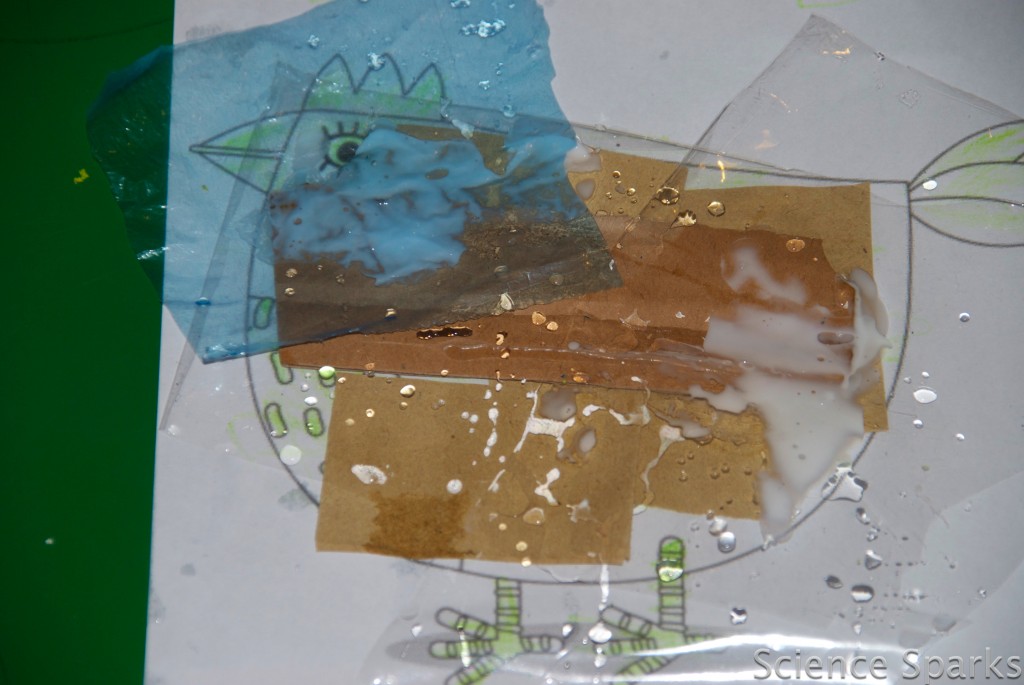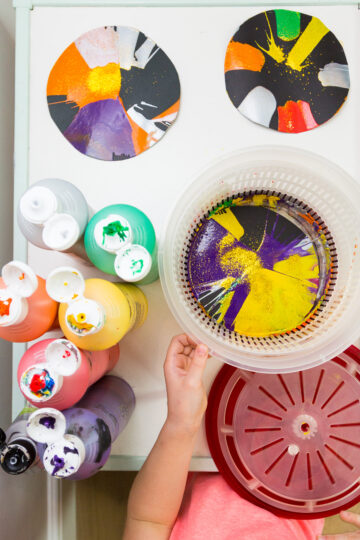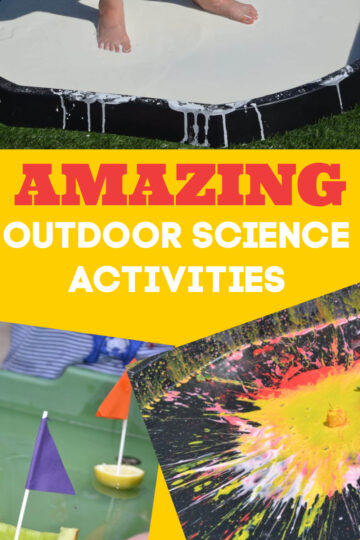This is a brilliant investigation for finding out how waterproof different materials are.
I printed a picture of a chicken and asked the children to colour it in, then gave them a selection of materials to protect the chicken from water.

What you need
- Paper with a picture on it.
- Materials such as kitchen roll, plastic, bubble wrap, and greaseproof paper cut into squares.
- Water
- Glue

Instructions
Place the squares of material over the picture.

Sprinkle water over the picture and see which types of material repel the water the most. Z put several layers on his after realising his first layer wasn't going to be waterproof enough. He was very proud when his chicken stayed dry, though.

Afterwards, we talked about how the waterproof materials felt different to the others. Z said they were shinier and harder to break.
Can you think of anything else you can waterproof?
The Science Bit
Waterproof objects cannot be penetrated by water. Rubber and wax are examples of natural waterproof coatings that are often used to make materials waterproof.
Can you think of any more waterproof materials? Is your coat waterproof? What's it made of?
Suitable for Key Stage 1
Last Updated on February 28, 2023 by Emma Vanstone




Multiple Mummy says
I love this! I am going to have a go at this with Noah!
ScienceSparks says
Yay, glad you like it
sarahmumof3 says
what a great activity fun and learning together is always the best 🙂 x
ScienceSparks says
Thanks Sarah, i just read your learning post 🙂
Carrie says
What a wonderful activity. Teaches so much. Thank you for sharing at Sharing Saturday! Have a wonderful week!
ScienceSparks says
Thank you, so glad you liked it.
Katy says
Great to find a site with science ideas.
karenloutzenhiser says
So happy to have found your site. It looks like tons of fun for my little budding scientists! I posted your button on my sidebar and am a new subscriber!
Warmly,
Karen
http://www.layers-of-learning.com
ScienceSparks says
Thank you, I will pop over and take a look at yours. x
cathy @ nurturestore says
Thanks for sharing this with the Kids Co-op. I love how your projects are all so hands on and the kids can really join in 🙂
ScienceSparks says
Thanks Cathy, it means a lot that you like our activities. x
Ticia says
We did a variation on this once and it was really fun. It looks like yours was more effective though because ours eventually got all wet.
Thanks for linking up to Science Sunday!
Ana says
This is such a great idea for exploring this concept with kids! Thank you!
Zena's Suitcase says
Love this activity! We are going to be using this in home school this week